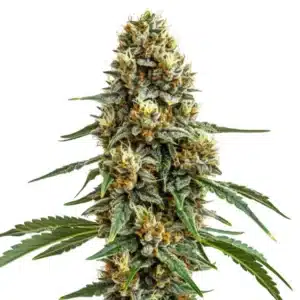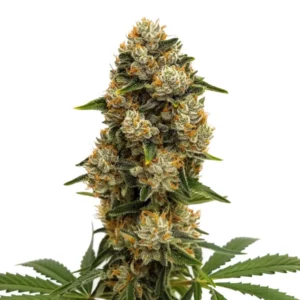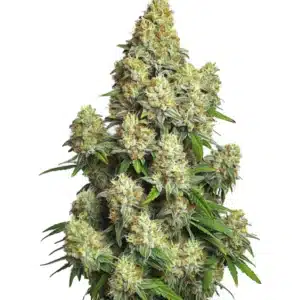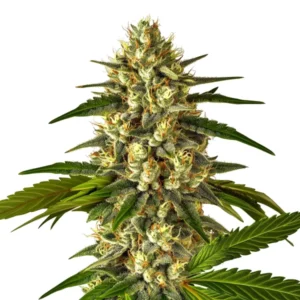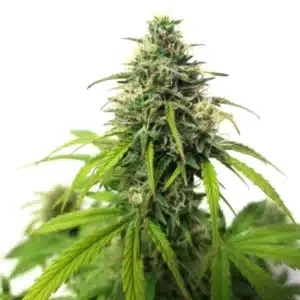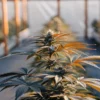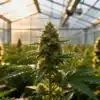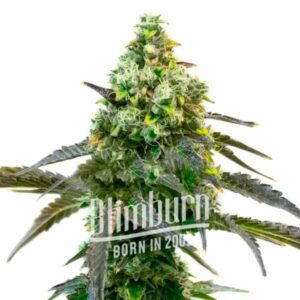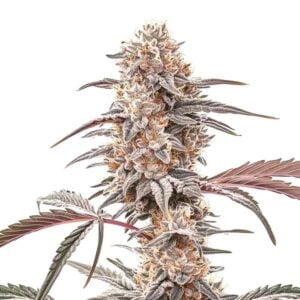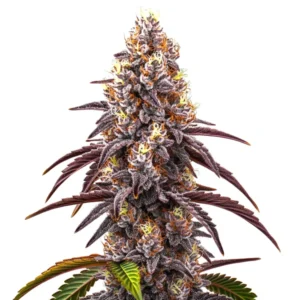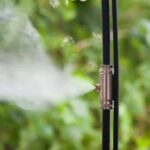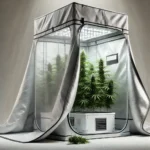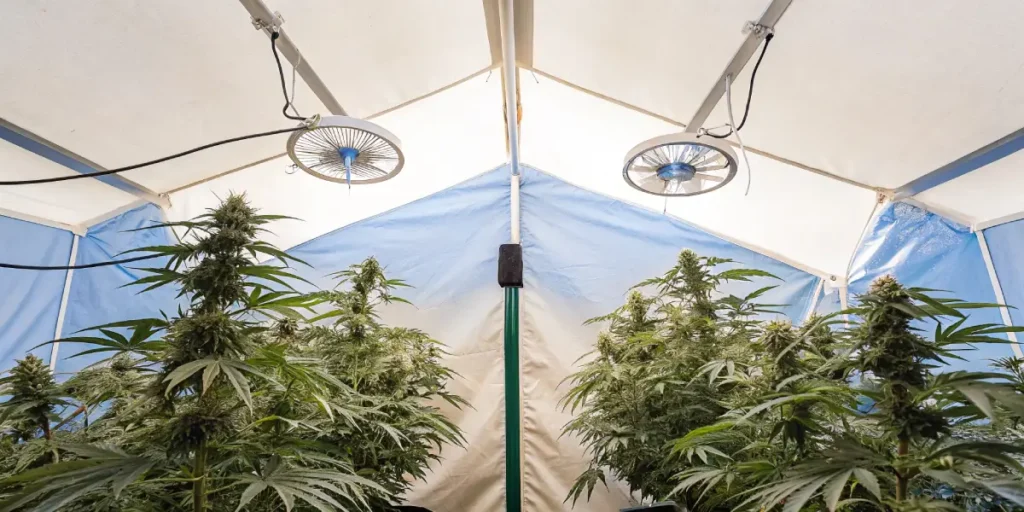
Best Fan Position to Cool Grow Tent: Optimizing Your Indoor Grow
Finding the best fan position to cool a grow tent is one of the most critical steps for maintaining the perfect environment for your plants. Whether you are a seasoned grower with years of experience or embarking on your very first indoor cultivation journey, the positioning of your fans can make or break the success of your grow tent setup. Fans are not just for cooling; they play a vital role in temperature regulation, humidity control, and maintaining proper air circulation. If done correctly, it can prevent many common growing problems and significantly improve your plants’ health and yield. This guide takes you through everything you need to know about fan positioning, why it matters, and how to make the right choices for your setup.
Knowing why fan placement is essential is the first step toward creating the perfect environment. Choosing the best fan for indoor growing is just as important, as improperly positioned or low-quality fans can lead to uneven cooling, pockets of stale air, and even higher energy bills. On the other hand, strategic fan placement—paired with the right equipment—can ensure consistent airflow, optimal temperatures, and an overall healthier environment for your plants. Let’s start by breaking down the main reasons why fan positioning should be your top priority.
Recommended Strains
Durban Poison
|
|
THC | 15% - 25% (Medium) |
|
|
Type | Feminized |
|
|
Yield | Medium |
|
|
Phenotype | 10% Indica / 90% Sativa |
Durban Poison Autoflower
|
|
THC | 21% - 25% (Medium) |
|
|
Type | Autoflowering |
|
|
Yield | Low |
|
|
Phenotype | 20% Indica / 80% Sativa |
Why Fan Positioning is Crucial in a Grow Tent
When setting up a grow tent, it’s easy to underestimate the importance of airflow. However, air movement is about more than just cooling down the space. Proper fan positioning affects several key factors that are essential for successful cultivation. For example, fans help to distribute heat evenly throughout the tent, preventing the formation of hot spots that could damage your plants. Similarly, they reduce humidity levels, minimizing the risk of mold and mildew, which are common problems in stagnant environments. Good airflow also strengthens plant stems and ensures that CO2, which is vital for photosynthesis, is distributed evenly.
Another benefit of proper fan placement is odor control. As plants mature, especially during the flowering stage, they emit strong odors. Fans, especially when used with carbon filters, help manage these smells and keep your grow tent discreet. All these benefits are only achievable when fans are placed strategically and are of the right type for your grow tent setup.
Promos & Deals
Key Considerations for Fan Placement in Your Grow Tent
Best Fan Position To Cool Grow Tent: The Size of Your Grow Tent
The size of your grow tent is one of the most important factors to consider when deciding on fan placement. The dimensions of your tent determine how many fans you will need, their size, and where they should be positioned. For instance, in a small grow tent measuring 2’ x 2’ or 3’ x 3’, one or two fans may be sufficient to create a balanced airflow. However, in medium-sized tents, such as those measuring 4’ x 4’ or 5’ x 5’, a combination of inline fans, oscillating fans, and clip-on fans might be required. For large grow tents, which are typically 8’ x 8’ or larger, multiple fans at different heights and angles will be necessary to ensure proper air circulation.
Best Fan Position To Cool Grow Tent: Types of Fans and Their Roles
To create the perfect environment in your grow tent, you’ll need to use different types of fans, each with a specific purpose. Inline fans, for instance, are installed within ducting to either exhaust hot air or bring fresh air into the tent. These fans are essential for maintaining temperature and humidity levels. Oscillating fans, on the other hand, are designed to provide constant airflow across the plants, mimicking natural breezes that help strengthen stems and improve overall plant health.
Clip-on fans are small and adjustable, making them ideal for targeting specific areas within your grow tent. Finally, stationary circulation fans push air around the tent evenly, ensuring there are no dead spots where air might stagnate. Choosing the right combination of these fans is key to achieving optimal results.
Best Fan Position To Cool Grow Tent: Airflow Direction
One of the most effective ways to manage airflow in your awesome grow tent is by ensuring that air moves in the right direction. The goal is to create a setup where cool, fresh air is drawn in at the bottom of the tent and hot, stale air is exhausted at the top. This takes advantage of the natural tendency of hot air to rise, making the cooling process more efficient. When setting up your fans, aim for a configuration that promotes this upward airflow pattern, and avoid directing fans straight at your plants, as this can cause windburn and stress.
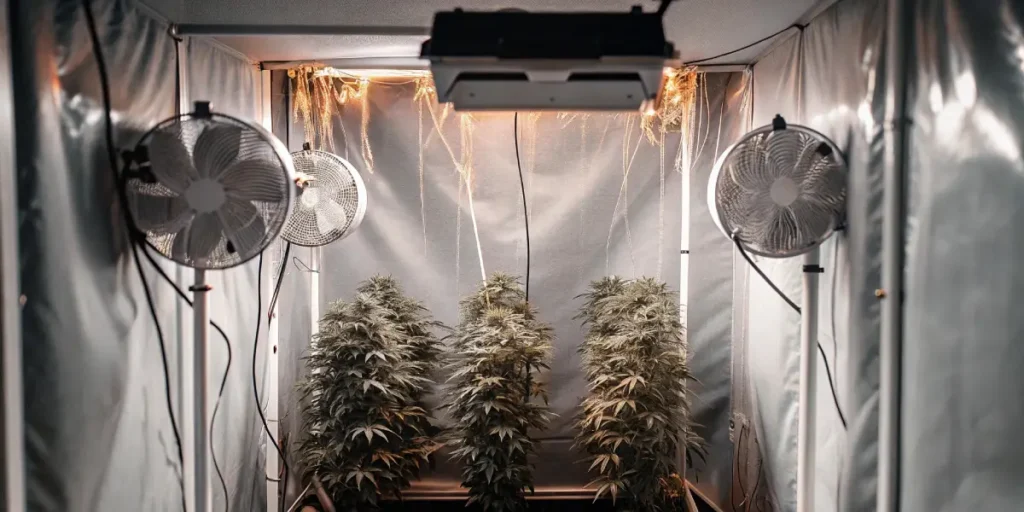
Optimal Fan Positions in a Grow Tent
Positioning your fans correctly is an art that requires a bit of experimentation and adjustment. However, there are some general guidelines that can help you get started. Begin by placing your intake fan near the bottom of the grow tent. This will allow cool air to enter the space and circulate upward. Make sure the intake fan is directed toward the center of the tent and is not obstructed by pots, trays, or other equipment. Using a mesh or filter on your intake fan is also a good idea, as it can prevent pests and debris from entering your grow tent.
Next, position oscillating fans at canopy level. These fans should move back and forth to mimic natural breezes, which strengthen plant stems and prevent the formation of microclimates. Mount oscillating fans on poles or clip them to tent supports, ensuring they do not blast plants directly but instead provide gentle, consistent airflow.
Exhaust fans are best placed near the top of the grow tent, where they can remove hot, stale air. Connect your exhaust fan to a carbon filter if odor control is a concern, and use ducting to direct the airflow outside your grow space. To maximize efficiency, keep ducting runs as short and straight as possible. Finally, place stationary circulation fans in the corners or along the sides of the tent. These fans help to move air evenly across the grow space without creating direct drafts on the plants.
Common Mistakes to Avoid
Even with the best intentions, it’s easy to make mistakes when setting up fans in a grow tent. One common error is overcrowding the tent with too many fans. While it might seem like more fans would result in better airflow, this can actually create chaotic air movement and stress your plants. Another mistake is ignoring dead spots, which are areas where air does not circulate properly. These dead spots can lead to uneven growth and increase the risk of mold and pests.
Incorrect fan speeds are another issue. Fans that run too fast can cause windburn, while those that run too slow may not circulate air effectively. Finally, be mindful of noise levels. Loud fans can be disruptive, especially in home setups, so look for models with noise-dampening features or consider installing a fan silencer.
Choosing the Right Fan for Your Grow Tent
To determine which fan is best for your grow tent, start by calculating your tent’s CFM requirements. CFM, or cubic feet per minute, measures how much air a fan can move. To calculate the CFM needed for your tent, multiply its volume (length x width x height) by the number of air exchanges per minute, which is usually 1-3. For example, a 4’ x 4’ x 6’ tent has a volume of 96 cubic feet. If you aim for two air exchanges per minute, you’ll need a fan with a CFM rating of at least 192.
Noise levels and energy efficiency are also important considerations. Look for fans with noise-dampening features if you’re concerned about sound, and opt for energy-efficient models with variable speed controls to reduce operating costs. Investing in high-quality fans may require a higher upfront cost, but the long-term benefits make it worthwhile.
Enhancing Your Grow Tent Setup
In addition to fans, there are other tools and accessories that can improve the cooling and overall efficiency of your grow tent. Fan controllers, for instance, allow you to adjust fan speeds and automate airflow based on temperature or humidity levels. Ducting accessories, such as insulated ducting and clamps, help ensure efficient air movement and prevent heat loss. If fans alone aren’t sufficient to cool your grow tent, consider additional cooling options like portable air conditioners, evaporative coolers, or even placing frozen bottles near the intake fan for temporary relief.
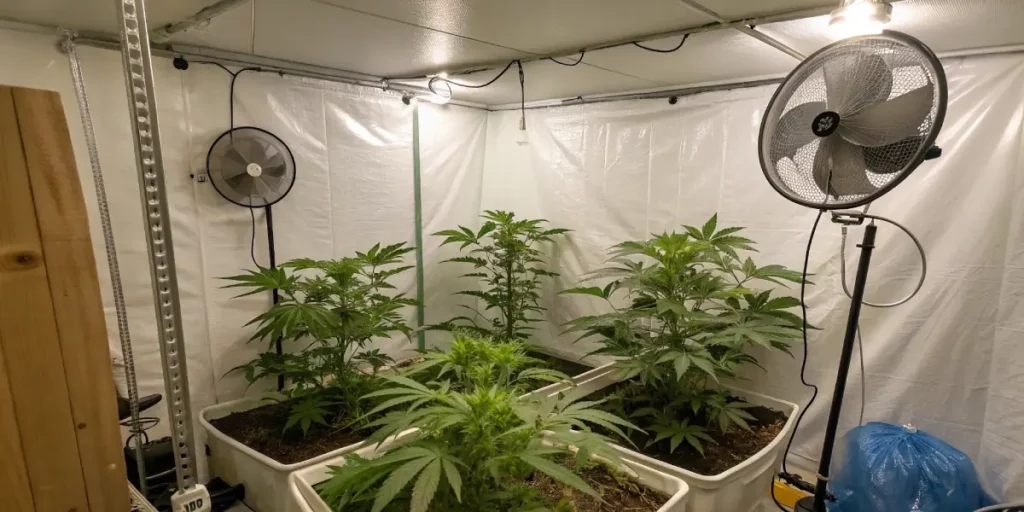
FAQs About Best Fan Position To Cool Grow Tent:
How many fans do I need for my grow tent?
The number of fans depends on the size of your grow tent and its specific needs. Small tents may only require one or two fans, while larger setups might need multiple fans for intake, exhaust, and circulation.
Can I use a single fan for both intake and exhaust?
While it’s technically possible, it’s not recommended. Using separate fans for intake and exhaust allows for better airflow control and efficiency.
What’s the ideal temperature for a grow tent?
Most plants thrive in temperatures between 70-85°F. Use fans to maintain a consistent temperature within this range and prevent overheating.
By understanding and implementing these strategies, you can create a grow tent environment that promotes healthy, vibrant plants. With the right fan positioning, you’ll be well on your way to achieving a successful indoor grow.


